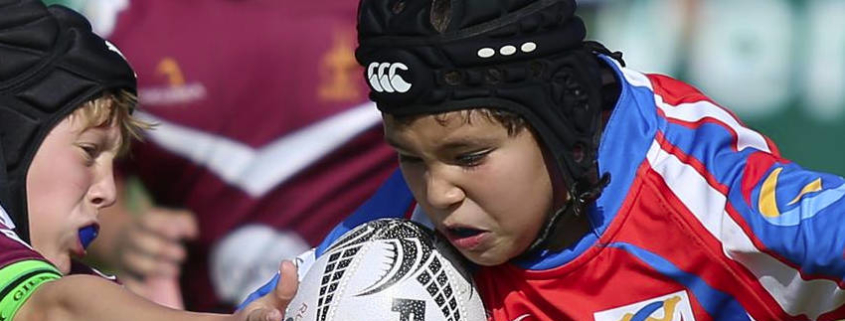Tackling in Children’s Rugby
“Teaching proper tackle technique is imperative to allow players to be successful and run a low risk of injury”
Hendricks and Lambert, 2010
Many youngsters enjoy rugby, especially playing rugby. Tackling in rugby is an art form, that when performed correctly can allow the smallest players on the pitch to stop the largest. Rugby is a physical game and a contact sport. Yes, the players get injured. Just as they do in athletics, gymnastics, horse riding, soccer, and indeed virtually every sport. What can be done is to teach the child the skills necessary to minimise that risk?
By teaching children the right way to act in contact situations, will help keep them safe and provide them with the tools to play effective defence in rugby. Focusing on correct positioning becomes pointless if players don’t know what to do when confronted by the ball carrier. Research suggests that concussion is reduced by increased competence in completing the tackle; so the better you are at the skill, the safer you will be.
Children who are taught correct technique from a young age are more likely to retain safe tackle behaviours and it helps children of all sizes feel confident that they can take the ball carrier down, regardless of the ball carrier’s physique. This helps to reduce injury rates, and makes the sport safer at all levels of the game. Correct head placement, using the shoulder, and driving the legs in contact have all been found to be technique factors associated with a reduced risk of a concussive tackle. Tackle with your head up instead of down, away from contact and to the outside and be aware at all times of the position of your head. After you wrap the other player up, drive your body with full force. Keep your momentum up when going in for a tackle and focus on your centre of gravity and balance when you are about to tackle .Get as low as possible. Coaching school children the safety of tackling from a younger age in a low-pressure environment when they are younger and the game is slower is arguably far safer than introducing contact to more physically developed players when they are older, stronger, and heavier and the game is faster and more physical.
Tackling puts pressure on the entire body – from the neck and shoulders all the way down the spine to the hips ankles. There are times when injuries are a result of poor technique but inadequate pre-match preparation, poor classroom study posture and stiffness of the back, neck, shoulders, hips and legs as well as inefficient body biomechanics can predispose your child to injury. Osteopaths want to ensure that you’re preparing for every match properly and taking the right steps for a successful recovery from injury. Osteopaths help by treating problems involving the joints, bones, and muscles, and the effects they have on each child as they grow. Any abnormal posture or muscle imbalance can create muscular and fascial tension which in turn compromises normal spinal position and this may result in a loss of strength and speed. This means that any biomechanical force that you generate doesn’t work as efficiently as it should. So, by improving restricted movement in the spine and joints, allows for a better functioning nervous system and biomechanical function. So osteopaths help facilitate an increase muscle strength, control, coordination and a healthier posture in a tackle.
Osteopathic care has a particular focus on spinal health; osteopaths can gently adjust the spine and mobility of the whole body. By improving the function of the spine, the body also improves its natural ability to heal.
View a list of common complains that Osteopathy can assist with
Discovery the benefits of Osteopathy
- What is Osteopathy?
- Adult health issues
- Babies and Children
- During and after pregnancy
- Common Complaints
- Testimonials
- Sports Injuries
- Genral Osteopathy FAQs
- The Science & Reasearch



